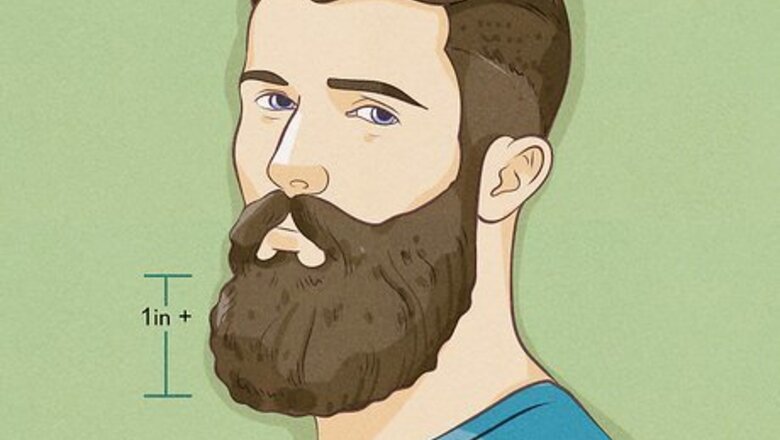
views
Preparing to Dye Your Beard

Grow out your beard. In order for the color to stand out, your beard will need to be a little bit longer. Wait a week or two after deciding to dye your facial hair to give it time to come in nice and thick. A little extra length will also help the dye hold. Facial hair shorter than about an inch (2.5cm) may be more difficult to dye. If you dye your beard before it has a chance to fill out, you'll just be forced to repeat the process later on to blend in the new growth.
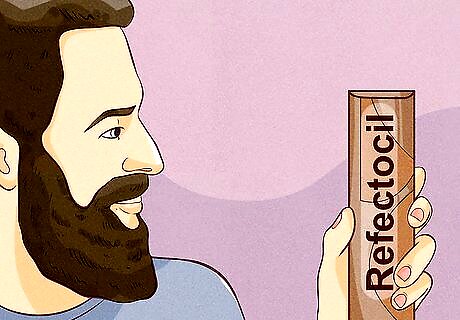
Choose a matching dye. You'll want to select a shade that's similar to your natural hair color. If you have dark hair, go with a deep brown rather than black, which almost always looks artificial. If you have lighter hair, find a dye that most closely matches your own shade. Use the color squares on the packaging for reference. Since beard dyes tends to show up dark, it's usually a good idea to pick a color that's slightly lighter just to be on the safe side. Just For Men, Redken and RefectoCil are a few of the most highly-rated brands of beard dyes.
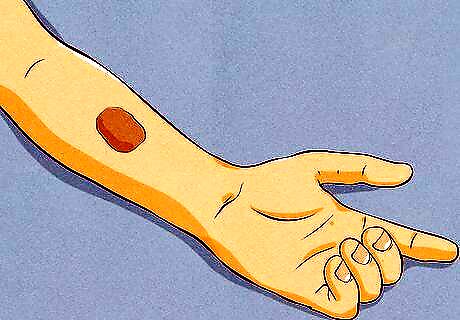
Do a quick patch test. Some beard dyes can cause allergic reactions. To make sure you won't have an issue with the hair dye you've chosen, rub a single drop onto an inconspicuous area of skin, like your wrist or the inside of your elbow. If you don't experience a reaction, it's safe to go ahead and color your beard. Leave the dye in place overnight to give it ample time to react and check the results the following morning. If spot where you applied the dye becomes red, itchy or inflamed, switch to a hypoallergenic variety of dye.
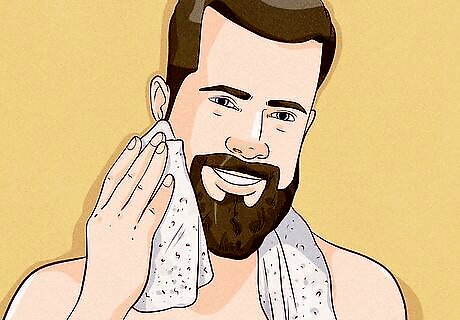
Wash and dry your beard. Wet your facial hair and work a small amount of shampoo through it to form a rich lather. Scrub the skin beneath your beard with your fingertips, then rinse out the shampoo and towel off or blow dry thoroughly. It should be completely dry before you begin dying. Make sure you've rinsed out every last trace of shampoo so it doesn't interfere with the dye's ability to take hold. Don't use a conditioner. This will form a protective coating around the hairs, making it harder for them to absorb the dye.
Applying the Dye
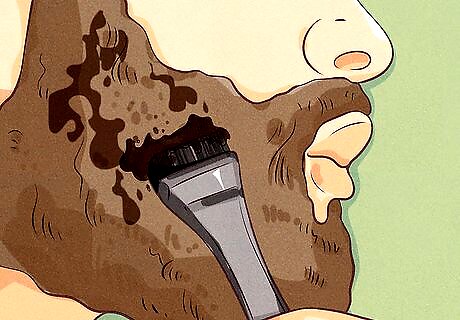
Brush the dye onto your beard. Use the long-handled applicator included with the dye kit to layer the dye onto your facial hair. Brush with quick up-and-down strokes, making sure you've covered all visible patches including the mustache and sideburns. Work the dye down deep, but try not to let it come into contact with the skin itself. Pull on a pair of rubber gloves to protect your hands from staining and irritation. If you don't have an applicator, you can also use a toothbrush, makeup brush, flexible fine-toothed comb, or disposable mascara wand.
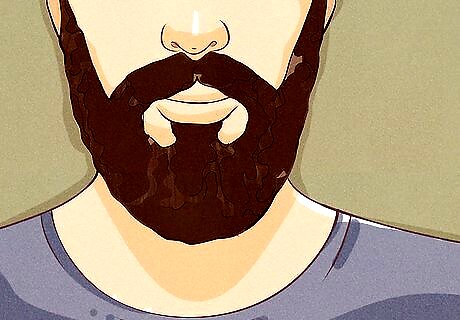
Leave the dye on until your beard reaches the desired color. Once applied, the dye will begin working within minutes. Keep a close eye on the color of your beard during this time. To test the results, you can remove the dye from a small section using a damp paper towel and take a look at the coloring underneath. Follow the instructions on the packaging to get an idea of how long you should let the dye set up (this will usually be somewhere between 20-40 minutes). For darker beards, a second application may be necessary to achieve the right depth of color.

Rinse out the excess dye. When you're satisfied with the color, turn on the faucet and run some cool water over your beard. This will dull the vibrant dye to a more natural-looking tint. Continue rinsing your beard until the water runs clear. Make sure not to let any dye get in your eyes, mouth, or nose. Massage the hairs by hand to help free dye trapped inside. It may be a good idea to wait about 24 hours before using your normal skincare products, because they can irritate your skin if you apply them immediately after coloring.
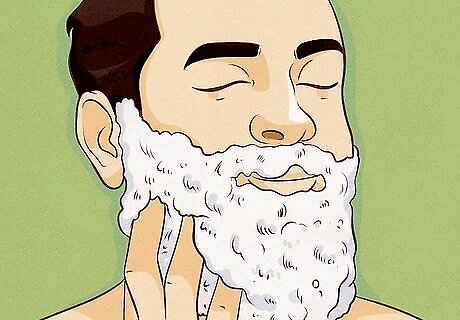
Shampoo your beard. If your beard comes out too dark, you can lighten it a little by showering right away while the dye is still fresh. It may also help to scrub your facial hair with a clarifying shampoo, although this may strip away more color than you want. Blow dry your beard on a low heat setting or let it air dry to avoid staining your towels. After your first shampoo, you can go back to showering, cleaning and trimming your beard as usual.
Maintaining the Color of Your Beard
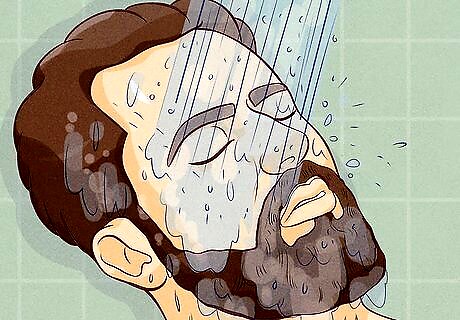
Rinse your beard lightly when you shower. Avoid handling your newly-dyed facial hair too much, as the friction may rub off the coloring. Instead, let the water run through your beard and comb it out gently with your fingers. Most of the time, a simple rinse will be enough to keep your beard clean and your color intact. Hot water is more likely to cause fading than cooler temperatures. Wait until your beard is dry before brushing it or applying any other products, like lotions or oils.
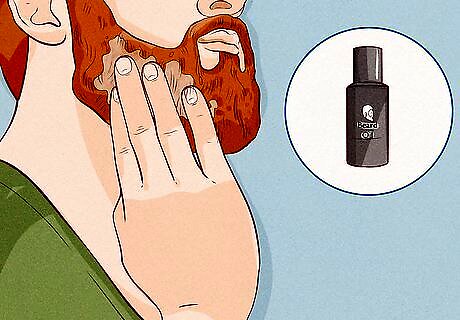
Use color protecting products. Invest in shampoos and conditioners formulated for use on color-treated hair. These are designed to clear away dirt and oil without affecting the hair's color. You'll be able to find these types of products in the beauty aisle of most major supermarkets and pharmacies. If you're used to shampooing and conditioning your beard every time you shower, consider cutting down to once or twice a week.
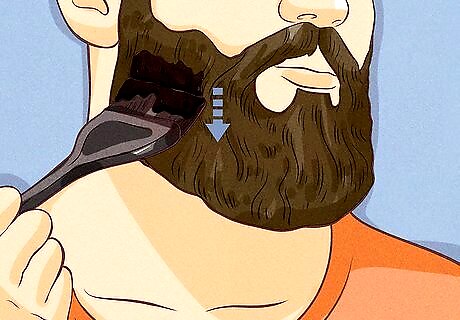
Touch up your beard periodically. Most dyes are non-permanent, which means they'll need to be reapplied when they begin to fade. For follow up colorings, you'll probably only need to go through a single round of coloring. Treating your beard regularly will keep it looking thick, full and youthful. Aim to dye your beard every 3-6 weeks, or sooner if needed. Because of how fast facial hair grows, your beard's roots may need to be touched up more frequently than the rest of it.




















Comments
0 comment